Indonesia's horticulture industry is an important sector for the country's economy, providing employment to a large number of people. It is a sector that has developed strongly in recent years. Gerrit Staal also saw this during a visit to the country this spring. "There will be increasing investment in new technologies and innovations to improve efficiency, productivity, and product quality," he shares from a market survey he conducted. This article does not cover the full scope of his market analysis but highlights some important aspects.
The island state has a total area of 1,904,569 km². With a population of 275,501,339 (2022), it is the 4th largest country in the world in terms of population. According to the Population pyramid's model, it will be home to around 317 million people by 2050. The shortcomings in Indonesia's agriculture and horticulture sector, such as low level of technological development, aging farming population, low involvement of young people in agriculture and horticulture, and other problems threaten the country's food security.
Gerrit started Initiative Greenhouse Horticulture Indonesia. He is working hard for horticulture development in the Asian country. Besides market research, he also gave his first trainings and advice to growers and agriculture and horticulture students in the country.
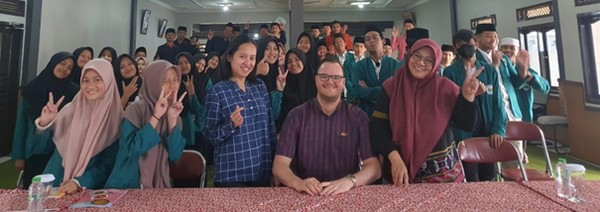
Future entrepreneurs in Indonesia's high-tech horticulture pictured with Gerrit, his wife, and Evi (CEO, Al-Ittifaq).
Crops
The main horticultural crops in Indonesia include vegetables, fruits, flowers, and herbs. "Vegetables such as peppers, cabbage, tomato, spring onion, and cucumber are the most commonly grown vegetables. Fruits such as mango, dragon fruit, papaya, and pineapple as well as coconuts are also grown in large quantities. Floriculture is mainly export-oriented and includes roses, carnations, and orchids. And there is a huge palm oil and tobacco industry also aimed at exports."
Fathan Subchi of the Republic of Indonesia said in a written statement to media teams in 2022 that the agriculture and horticulture sector needs to be further strengthened, especially as the world is on the brink of a food and energy crisis that is sure to impact Indonesia. At the same time, Gerrit expects that local, regional horticultural development with Dutch technology in Indonesia will also contribute to the economic growth of Indonesia and the Netherlands.
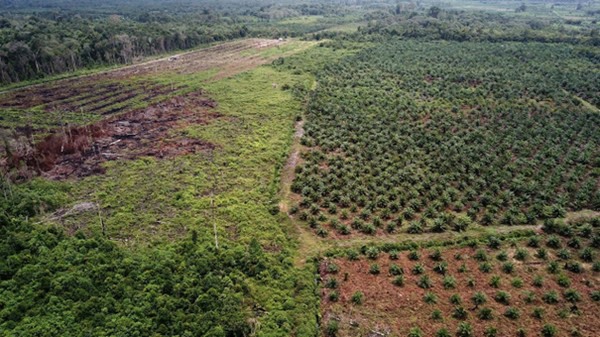
Palm oil plantation in Indonesia.
Greenhouses in Indonesia
One of the main challenges for modern horticulture in Indonesia is the limited use of advanced technologies and cultivation knowledge and the lack of modern greenhouses and facilities. You come across all kinds of things: Open fields, simple tunnels, bamboo structures, steel foil greenhouses, and under steel structures with polycarbonate.
"Many gardeners and farmers still use traditional farming methods and have limited access to modern technologies and infrastructure. This has led to lower yields and a lack of competitiveness in the international market."
Greenhouses in Indonesia are mainly located on the most populated and developed islands, Java and Sumatra. There are large horticultural areas in the West, Central, and East Java regions where greenhouses are regularly found alongside open-field production. This is because most horticultural products in Indonesia are grown for the local market and sometimes for export to other countries in the region, observes the Dutchman with a soft spot for Indonesia.
"That's why greenhouses are near urban centers where products are in high demand. But we are not talking about large greenhouse complexes there. And I haven't found densely concentrated greenhouse areas yet. Although there are also some greenhouses in other parts of Indonesia, they are present to a lesser extent."
Positive developments
During his visit, Gerrit saw film greenhouses under construction. Positive developments, of which he saw more. "Growing export figures and increasing interest from international investors in Indonesia's horticulture sector indicate that there is a lot of potential for further growth and development in the sector. Hydroponics is gaining popularity among several growers in Indonesia as an innovative and efficient way to grow crops. The country has a fast-growing population, and the demand for fresh produce is increasing.
The government of Indonesia has launched several initiatives to stimulate the development of the horticulture sector, such as providing subsidies to purchase more modern equipment and improving transport and storage infrastructure." There is also a positive development that involves turning depleted land with a lot of rooting back into fertile farmland so that fewer forests need to be cut down to produce certain crops.

You simply can't get production closer to the market than this. A small hydroponic crop set-up in a supermarket in Jakarta.
Private initiatives
Several private initiatives have already been launched to boost the development of the sector, such as the establishment of greenhouses and the introduction of automated irrigation systems. "These initiatives have led to improved yields and increased competitiveness in the international market."
Another important development is the increasing focus on environmental protection in Indonesia's modern horticulture sector. "More and more growers and companies in the sector are using environmentally friendly and natural methods, such as circular farming methods, there is a rise in the use of organic crop protection, and I see an increase in the use of renewable energy sources such as solar energy and biogas."
Growth of the horticulture sector
Indonesia's horticulture sector has experienced significant growth in recent years, mainly driven by the growing demand for healthy food and the rise of the country's middle class. Moreover, the government is supporting the sector through policy measures and infrastructure investments.
According to Gerrit, the visible strong development of Indonesia's modern horticulture sector in recent years can also be seen in terms of, among other things, increased exports (9% increase in 2020 compared to 2019, accounting for $3.5 billion worth of horticultural products), increase in investments, focus on hydroponics, on the sector's role in providing jobs for people, and innovation. Importantly, more and more people recognize that the horticulture sector provides employment for a large number of people in Indonesia, both in cultivation and in the processing and distribution of horticultural products.
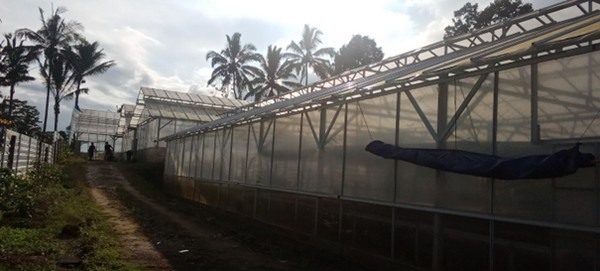
Seed breeding greenhouses in Bali with continuous ridge ventilation and continuous side wall ventilation.
Gerrit explains: "There is increasing investment in Indonesia's horticulture sector, both by domestic and foreign investors. For example, new greenhouses are being built and technologies introduced from abroad to increase productivity and efficiency."
Investments focus on innovations in different areas, such as breeding, cultivation methods, and packaging. "This is to improve the quality and shelf life of horticultural products and increase the competitiveness of growers in the internal market. These developments also increase Indonesia's competitiveness in the international market," Gerrit said. More attention is also emerging for sustainability and environmentally friendly cultivation methods.

Foil greenhouses in Java from above.
Challenges
However, there are also some challenges facing the horticulture sector in Indonesia. One is the lack of access to capital and technology for small-scale farmers, which limits their productivity and profitability. In addition, there are trade and export restrictions, making it difficult for producers to sell their products in international markets.
"A major threat is also that very many young people do not choose horticulture but move to urban areas. Yet there are many initiatives to keep horticulture attractive and interesting for young people as well. Growing in greenhouses certainly helps with that," Gerrit observes. "In addition, open-field vegetable cultivation in Indonesia still uses a lot of chemical pesticides."
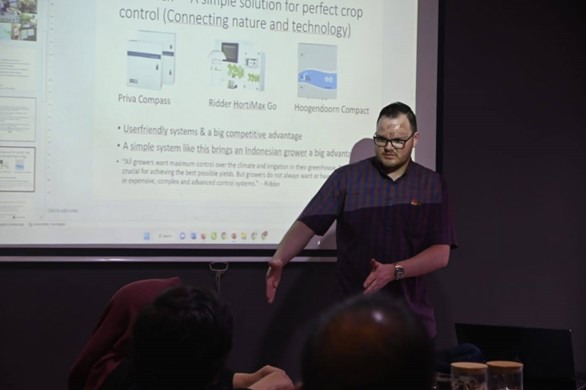
He notes, "These challenges need to be addressed to further develop the sector and maximize its economic benefits. Indonesian growers agree. New greenhouses, education, Dutch knowledge, and technology can contribute a lot to that."
"There is a need to push forward"
All in all, Indonesia's modern horticulture sector still has a long way to go to fully compete with other countries in the region, observes the Dutchman. "But the positive developments and initiatives offer hope for the future and show that the sector is moving in the right direction. Growers in Indonesia know that because of the challenges, there is pressure on food security."
Gardeners themselves are very willing to do more with their land, and they are also willing to use alternative forms of financing to do so, the Dutchman noticed during his visit. "But they are also asking the government of Indonesia to provide a financial incentive to develop. With the potential to contribute to the country's food security and economy, vegetable cultivation in Indonesia remains an important focus for the government and society as a whole.''
Looking to the future, Gerrit Staal says it is vital that continued investment in the sector is made now and in the future to increase the productivity and profitability of medium- and small-scale market gardeners and farmers and to stimulate the growth of the sector. "So that in the near future, Dutch film greenhouses can be built with Dutch horticultural technology in them accompanied by us. We have so much knowledge and can move the country forward."
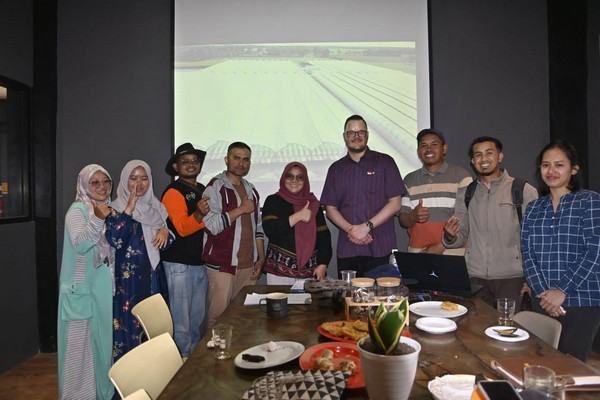
Indonesian growers from Al Ittifaq are very excited to start growing in Dutch film greenhouses.
For more information:
Gerrit Staal
indonesia.gerrit@gmail.com
